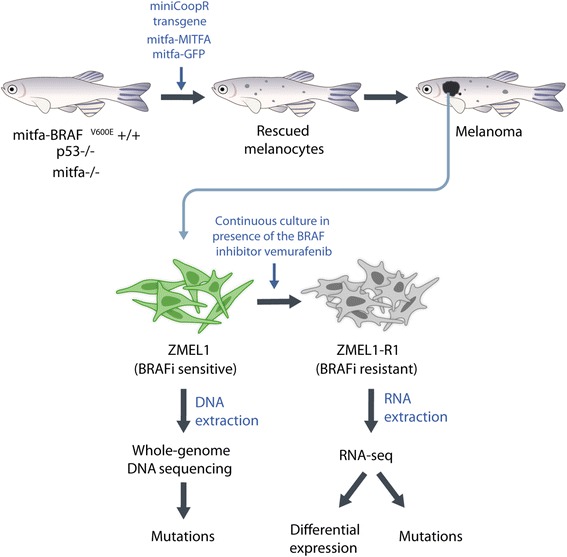Fig. 1.

Schematic representation of experimental plan. Fish with the genotype mitfa-BRAFV600E+/+;p53-/-;mitfa-/- are completely devoid of melanocytes due to a mutation in the mitfa gene, but carry the BRAFV600E transgene in their germline. Upon transgenic expression of a miniCoopR rescue cassette in which the mitfa promoter drives an MITFA minigene, the animals develop mosaic resuce of melanocytes. A small number of these melanocytes will eventually complete all the steps of malignant transformation, and emerge as a cutaneous melanoma. From one such melanoma, a stable cell line, ZMEL1, was derived. Genomic DNA was isolated from this line, along with normal DNA from the original fish from which the tumor was derived. These DNA samples were used for whole-genome sequencing to call mutations specific to the ZMEL1 tumor. The ZMEL1 line is highly sensitive to growth inhibition by BRAF inhibitors, as expected. Continuous culture for of the ZMEL1 line in the presence of high dose of the BRAF inhibitor vemurafenib for 4 months gave rise to a derivative cell line, ZMEL-R1, which demonstrates a 10-fold reduction in sensitivity to vemurafenib. RNA was isolated from this line, along with RNA from the parental ZMEL1 line, which was then used for both differential expression analysis as well as mutation calling
